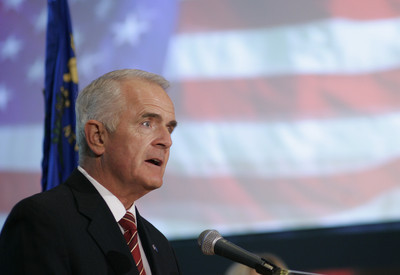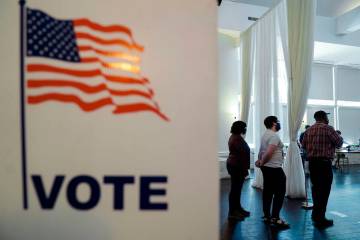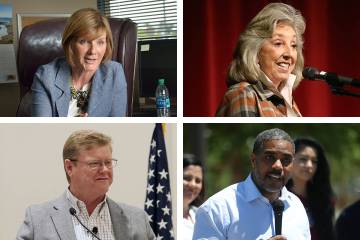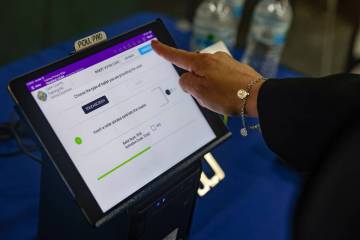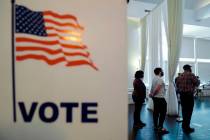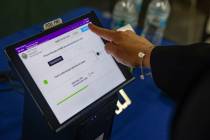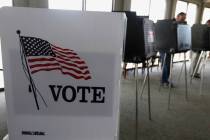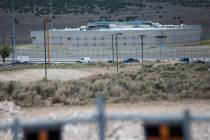Stimulus will give state budget boost
CARSON CITY -- Total spending by Nevada state government actually would increase by $1 billion under the governor's proposed two-year budget with the infusion of federal stimulus money, according to an analysis by a conservative think tank.
But even without the infusion, total state spending would have dipped only slightly, according to Patrick Gibbons, an analyst for the Las Vegas-based Nevada Policy Research Institute.
By focusing on general fund spending, and by describing any reduction in budget growth as a budget cut, Gov. Jim Gibbons, state lawmakers and the news media for months have exaggerated the extent of Nevada's budget woes and the depth of any needed cuts.
"They (the Gibbons administration) have framed the debate to make the solution look really, really bad," the analyst said. "It is bad, but not nearly as bad as they made it out to be."
BUDGETING 'BACKWARDS'
With the infusion of $1.5 billion in federal stimulus funds, overall state spending would increase to about $18.5 billion.
Even without the stimulus, total state spending for the coming two-year period would be $17.3 billion, only 1 percent less than during the current budget period, Patrick Gibbons said.
The approximate 30 percent "cut" that the governor frequently mentions is based on budget office calculations that general fund spending for the next two years should be $8 billion to keep services at the level contemplated when the Legislature approved the last budget.
"They did the budget backwards," said Patrick Gibbons, who is no relation to the governor. "They decided what they wanted to spend and cut from that. They took an imaginary number and pretended they cut something."
The general fund receives revenue from taxes on gaming, sales, liquor, cigarettes, insurance and payroll, among other taxes on individuals and businesses.
That money pays for education, prisons and general government agencies, and the salaries of teachers, professors and state government workers.
The $8 billion is what government would spend if it paid for growth in areas such as student enrollment and social services caseloads, along with providing cost-of-living raises to employees.
Because of the most severe recession in generations, the tax revenue and fees that support the general fund budget will not come close to $8 billion.
The Economic Forum in December estimated state tax revenue for the next two years at $5.7 billion. The Gibbons administration calls the more than $2 billion gap a "shortfall" in budget documents. The 30 percent "cut" represents the difference between these two figures.
"They are cutting from what they wanted to spend," Patrick Gibbons said. "This isn't a real cut. It is a tough time for everyone, but the sky isn't falling. If your position is no new taxes, you don't come out with a budget that we need to spend 40 percent more than what we are going to get."
What the Gibbons administration did is akin to an individual earning $70,000 who decides he needs a $100,000-a-year salary to maintain his standard of living.
When he again receives $70,000, he says he took a 30 percent cut in pay.
GROWING CASELOADS
State Budget Director Andrew Clinger said the difference is that the private individual has a choice in determining where he can reduce his spending.
The state government still must allocate money for teachers, for instance, at a time when student enrollment is growing, he said.
"We can't say, 'We can't serve you anymore because we are out of money,'" Clinger said. "We don't have a choice when it comes to educating students. It is not my job to alarm people, but we point out the numbers as we see them."
He acknowledged that total state spending would increase slightly with the stimulus infusion, but noted that only part of those funds could be used toward shortfalls in state social welfare programs.
Patrick Gibbons pointed out that the general fund accounts for about 35 percent of what state government actually spends.
Spending outside the general fund goes towards such things as road construction and unemployment benefits.
Most of the attention since the Legislature convened Feb. 2 has been on how the governor wants to cut the general fund by 9 percent because of the declines in state tax revenue.
But because of federal grants and the stimulus funds, total spending will rise to about $18.5 billion, or $1 billion more than the current period.
The governor's communications director, Daniel Burns, said even if state spending shows a slight increase, that has been more than canceled out by the unprecedented demand for services caused by the surge in unemployment.
"There are people who worked 30 years who are filing for unemployment for the first time in their lives. If their kid has a tooth abscess, are we not going to let him see a dentist?" Burns said.
Senate Majority Leader Steven Horsford, D-Las Vegas, and Jan Gilbert, a lobbyist for the Progressive Leadership Alliance of Nevada, said state government in effect would be making cuts if it couldn't respond to increasing social welfare caseloads.
Patrick Gibbons acknowledges that some state agencies are facing big budget cuts.
HIGHER EDUCATION CUTS
What the governor is doing is shifting funds from some areas, such as the Higher Education System of Nevada, to other programs, and the advocates for those losing funds are complaining, he said.
Patrick Gibbons is particularly harsh in his criticism of the Higher Education System of Nevada, which is scheduled for a $473 million general fund cut in the governor's budget. In essence, he maintains that Nevada's system of higher education has failed to produce results.
The analyst pointed out that the University of Nevada, Reno and the University of Nevada, Las Vegas have been graded respectively as third- and fourth-tier institutions by U.S. News and World Report.
Fewer than half of all students graduate within six years from those colleges, compared with a 79 percent graduation rate at the University of Texas, which receives less in state appropriations.
Public service announcements frequently are broadcast that college graduates earn $1 million more during their lifetimes. But in today's job market many college graduates cannot find jobs, Patrick Gibbons said.
Of all jobs created in 2006, he said just 24 percent required a college education.
"Having a college degree says you persevered and have a little intelligence, but does not guarantee you a job," he added.
Instead of requiring students to take courses on the history of feminism, colleges should offer young people training for jobs in which they can make a living, Patrick Gibbons said. If they cannot get that in a college, then they should try trade schools, he said.
"I am sorry to say that higher education is running a scam. We have this elitist attitude in America that everyone has to get a college degree. College today leaves many kids only with debts and disappointment."
Contact Capital Bureau Chief Ed Vogel at evogel@reviewjournal.com or 775-687-3901.
The Nevada Policy Research Institute's report can be found at npri.org



